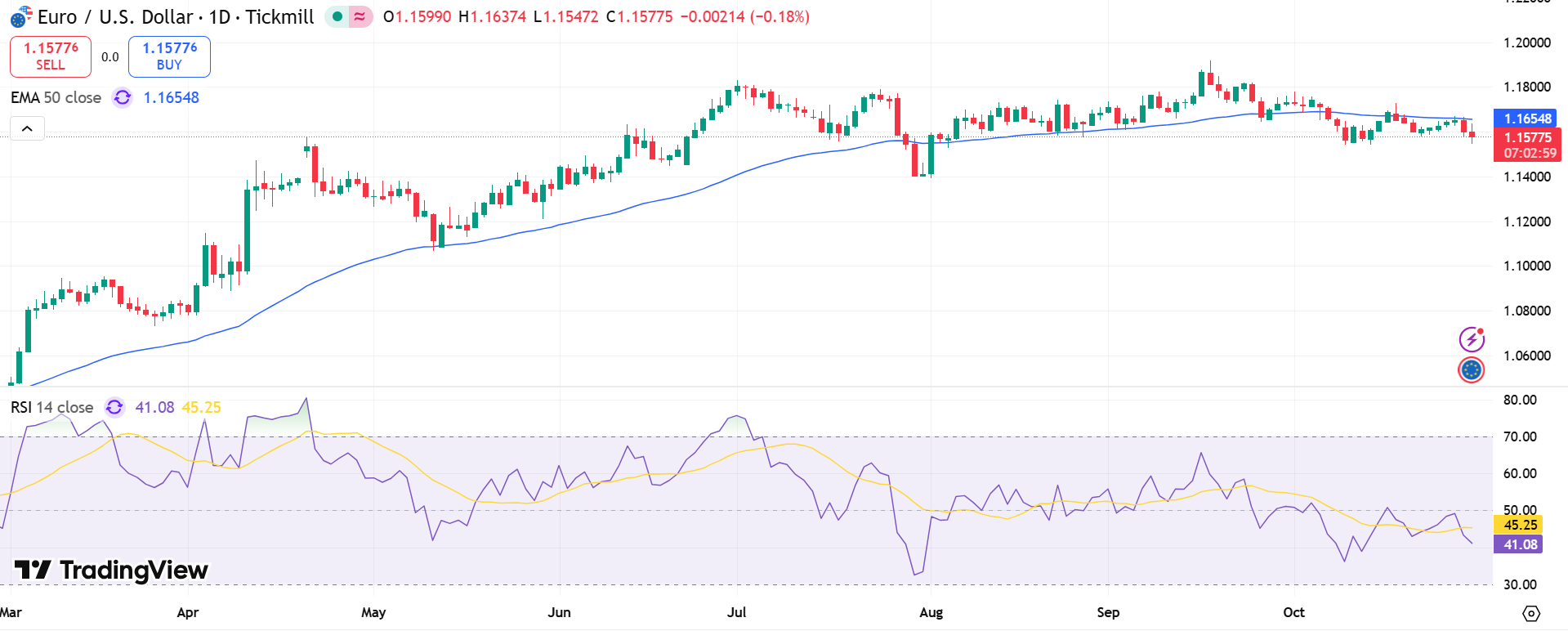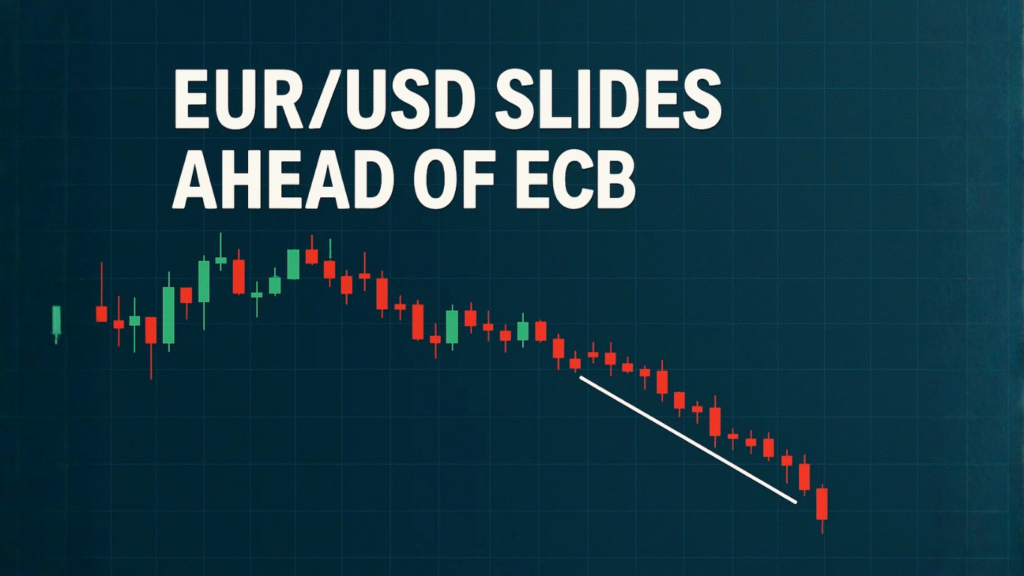The EUR/USD pair extended its decline on Thursday, slipping toward the 1.1570 level—its lowest in two weeks—as the U.S. dollar strengthened following the Federal Reserve’s latest policy decision. Investors are now closely watching the European Central Bank (ECB) meeting for clues on future monetary policy.
The euro struggled to hold above key technical supports after the Fed’s 25 basis-point rate cut to the 4.00%–4.25% range, a move that had been largely priced in. Fed Chair Jerome Powell said another cut in December was “far from assured,” emphasizing the need to guard against persistent inflation.
Following Powell’s comments, traders adjusted expectations, with the CME FedWatch Tool showing the probability of a December rate cut dropping to 70% from 90%. This shift fueled renewed dollar strength, weighing heavily on the euro.
Technically, EUR/USD fell below both its 20-day and 100-day Simple Moving Averages (SMAs), signaling bearish pressure. The Relative Strength Index (RSI) on the 4-hour chart also dropped toward 40, reinforcing short-term downside risks.
Key Levels and Technical Outlook
The euro now faces multiple support and resistance levels that could dictate near-term direction:
- Support levels: 1.1580 (Fibonacci 61.8% retracement), 1.1550 (static level), and 1.1500 (Fibonacci 78.6% retracement)
- Resistance levels: 1.1630 (20-day SMA), 1.1670 (100-day SMA), and 1.1700 (200-period SMA, Fibonacci 38.2% retracement)
Market analysts note that a break below 1.1550 could accelerate losses toward the 1.1500 handle, while a rebound above 1.1630 may help the euro regain some footing before the ECB announcement.

ECB and Eurozone Data in Focus
The ECB is widely expected to keep rates unchanged, though attention will center on President Christine Lagarde’s comments regarding inflation and growth. A hawkish tone could lend short-term support to the euro, while any acknowledgment of slower growth may deepen the selloff.
In addition, the Eurozone’s preliminary Q3 GDP data will offer another test for the common currency. Economists forecast a 0.1% quarterly expansion—a weaker print could revive speculation of an ECB rate cut in December.
As markets balance U.S. monetary divergence with European growth risks, EUR/USD remains vulnerable to further downside, especially if economic data disappoints or the ECB signals policy caution.


